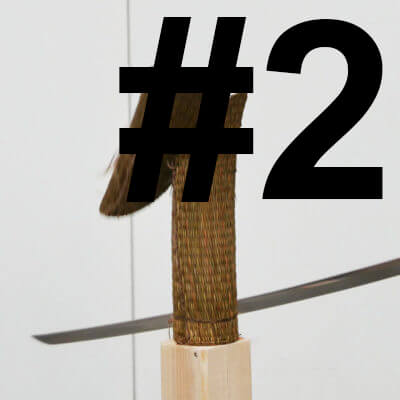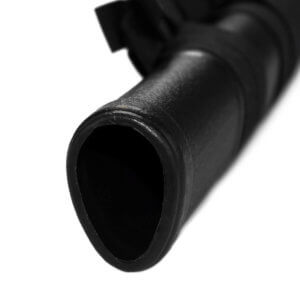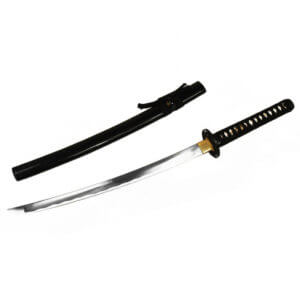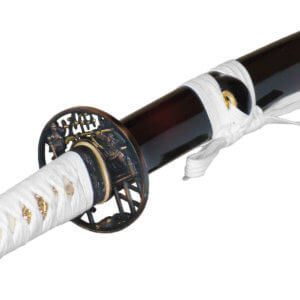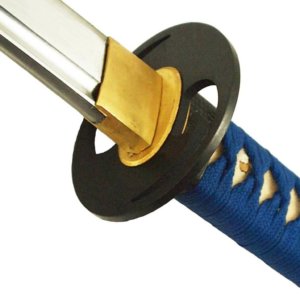A sharp sword is not a toy
As safety is an important issue, we will address this point at the beginning.
It seems as if the cutting exercise itself is dangerous, but in fact most injuries occur due to carelessness before and after the actual cutting exercise.
A sword is a dangerous object and incorrect handling can lead to injury. You should always bear this in mind and act accordingly.
Which cutting target is the right one?
There are many cutting goals. So many, in fact, that we provide a separate tutorial section for cutting targets. The softer the target, the easier it is to cut and the lower the risk of errors. It therefore makes sense to start with soft cutting targets.
You can quickly damage a sword if the target is too hard (for your personal abilities). That's why it makes sense to increase slowly.
Simple and sophisticated cutting techniques
Theoretically, you can cut in all directions with a sword. However, there are simpler and more demanding cutting directions.
The best way to learn how to cut is in one of the Martial arts schools from our directory.
More information about the directions for cuts can be found in one of the future tutorials.
Putting as much force as possible into the stroke increases risks
Ideally, you should cut instead of hitting. A cut does not require much strength. Looseness and speed are much more important.
Neither can be achieved by trying to hit the target as hard as possible.
Another favourite of many "YouTube samurai" is a step or a short run-up before the cut. This is unnecessary and should not be done, especially by beginners.
With a proper centreboard, the cut will not be a problem even without a run-up.
Using a lot of force without technique and control can quickly damage the sword used, resulting in a risk of injury.
How should the target be hit so that the sword is not damaged?
The following 2 points are extremely important! If a sword is damaged during cutting exercises, it is usually due to these points:
Note the scoring area
The striking surface of a samurai sword is in the front third of the blade:

This area is the sharpest and you have the best leverage. If you hit with the centre of the sword, for example, a blade can break quickly on a hard target.
For this reason, you should align yourself roughly with the correct distance to the cutting target beforehand and, as a beginner, try not to take any steps before the cut, as it is better to get a feel for the correct distance first.
Angle of the sword
The cutting edge of the sword should always point exactly in the direction of the cutting movement. The basis for this is that the sword handle is gripped properly and "from above".
For example, when cutting horizontally, the blade should also have an exactly horizontal angle.
Tilting the sword due to a poor angle can quickly bend the blade.
Example: Angle of the katana for diagonal cut

Example: Angle of the samurai sword for horizontal cut
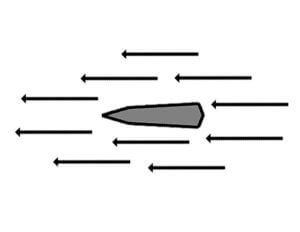
Which sword is really suitable for cutting tests?
Swords that are suitable for cutting tests are available in our shop from around 250 euros.
You often read on the internet that a sword must cost at least X amount or be made of XY steel to be suitable for Tameshigiri.
It has nothing to do with the price. Of course, there are many cheap swords that are not intended for cutting tests. But there is no price limit above which every sword is suddenly suitable.
Caution is advised with steel: It is not the steel that is decisive, but the workmanship. There is no point in having a sword made from the best steel if the blade has not been properly hardened and is brittle. That is why it is important to buy your sword from a reputable dealer and not from a random sword shop.
Provided it is processed correctly, we recommend up to Tatami Omote for softer targets Spring steel or Carbon steel with high carbon contentfor harder targets such as bamboo is 1095 carbon steel or L6 steel well suited.
Cutting tests should not be carried out with unsuitable blades, as this entails high risks to health.
Before every cutting exercise, it is important to check the blade for cracks. In the worst case, blades can break in such weakened areas.
Aftercare for the centreboard to maintain its condition in the long term
Important, but often neglected, is the aftercare of the blade. During most cutting tests, the blade comes into contact with moisture and dirt.
If the blade is not cleaned afterwards, it can quickly start to rust.
Immediately after the cutting exercise, the blade should be wiped with a damp cloth and then immediately wiped with a second, dry cloth. This allows dirt and moisture to be removed quickly.
Immediately after the training session, the normal sword care procedure should be carried out to ensure that the sword remains protected.
The onset of rust is not dramatic in itself. In the long term, however, rust can of course permanently damage or destroy the blade.
Safety for spectators
It is always advisable to keep a safe distance from anyone holding a drawn sword.
When carrying out cutting exercises in a group, only one person should cut at a time and the others should remain in a safe position.
It is safest to stand at some distance behind the person carrying out the cutting exercises.
Back to Tameshigiri Tutorial #1: Widespread myths
Go to Tameshigiri Tutorial #3: Cutting targets and substrates

